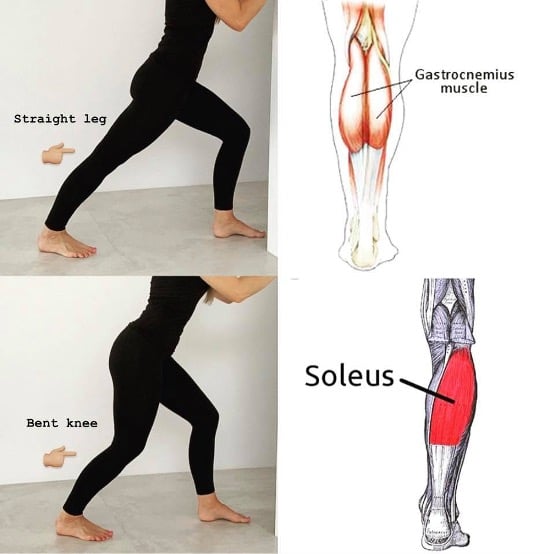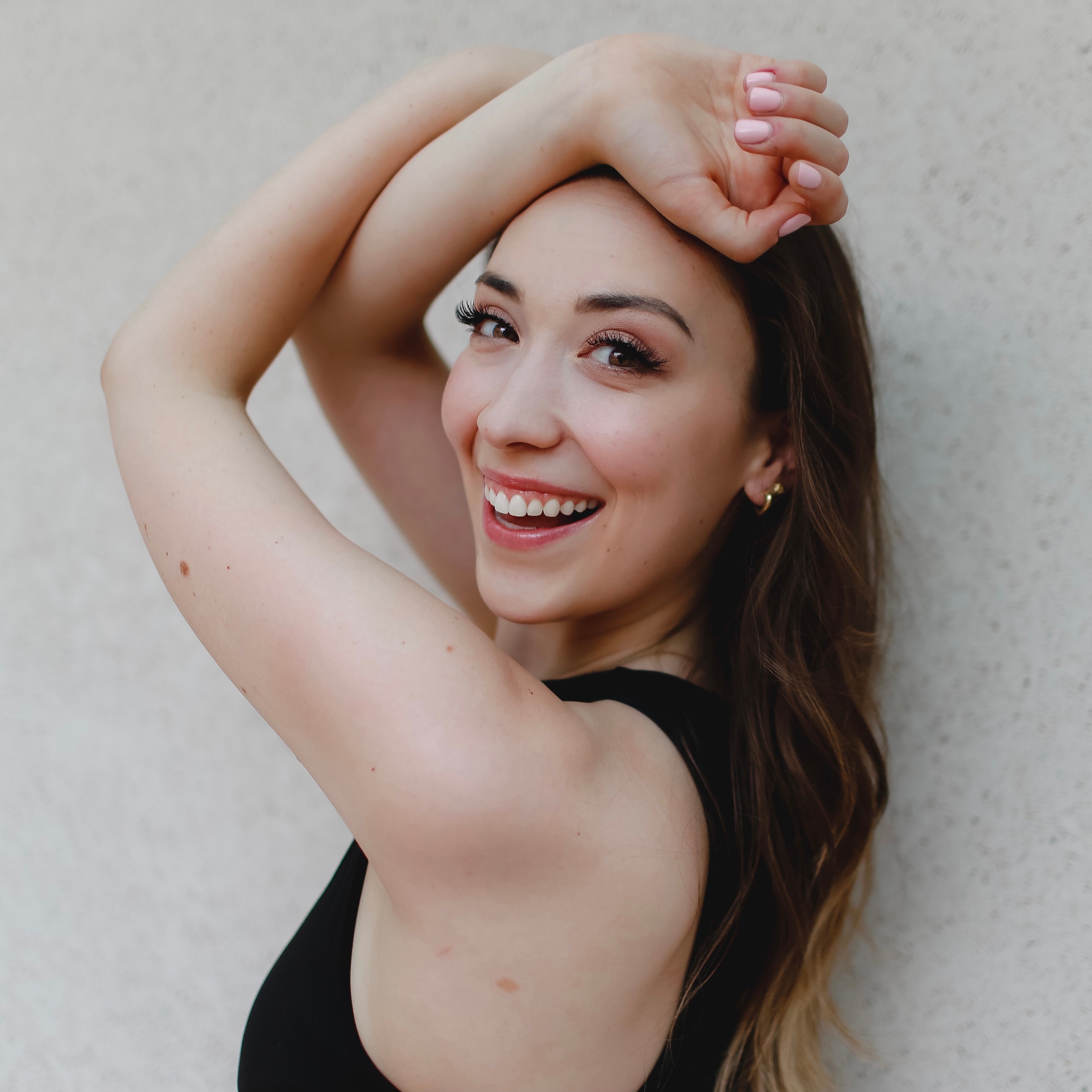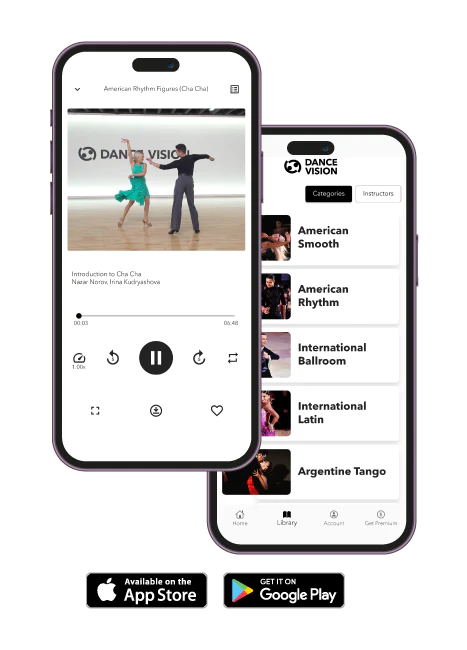Are you ready for the best dance practice ever? A deliberate warmup is the best thing you can do for yourself before practice to get your mind cleared, soul ignited, and body physically ready for movement.
So, what is a warm up? It means different things for different dancers, though it generally consists of dynamic (moving) and static (in-place) stretches, basic exercises related to what you have planned for practice (ex. rumba walks, quickstep scatter chasses), and movements that get your heart rate up and ready for dancing.
Mentally, warm ups help you engage a clear mindset before you begin practice. If you head to the studio after work or school, a warm up can remind your brain to let go of the day’s stressors and simply focus on your dancing.
Physiologically, moving our body slowly before working up to high intensity movement provides more oxygen and blood to the muscles. This increases our aerobic (with-oxygen) metabolism, which means the blood vessels in our moving body parts open up extra wide so increased blood and nutrients can reach them. As our internal body temperature rises because of blood pumping to mobile muscles, we begin to feel energized and ready to dance.
Dynamic Stretching
It is important though, to “not stretch when you’re cold,” urges Doctor of Physical Therapy and former Professional American Smooth dancer, Ruth Trimble. So before you think about dropping into those splits as you walk into the ballroom, get a little bit of movement going first! Physical therapists encourage dynamic movement before static stretching begins. Dynamic/ballistic stretches flow and move— think yoga movements, squats, or jumping jacks.
When is the right time to perform dynamic/ballistic stretching? According to Doctor of Physical Therapy Pablo Zarate, also a former Latin competitor, it’s right before you’re about to start a bout of dancing. “Right before competition, rounds, or a performance, I would suggest ballistic stretching (rapid, forceful intermittent stretch that is high velocity and high intensity) as it has been shown to enhance physical performance of our muscles prior to physical activity.” Dr. Trimble agrees, “Normally it is recommended to bring core temperature up and to the point that you're lightly perspiring. Jogging in place, jumping jacks etc. Mark through your choreography... Really most things would work. I will say especially for dancers, make sure you move that joint before you stretch it.”, she explains.
Static Stretching
Static stretching, by contrast, is what most dancers think of as warm up-stretching: holding a position for 10-30 seconds for a few intervals to work on flexibility and muscle elongation. This form of stretching can happen after the body is warmed up by dynamic stretching and, “for long term musculoskeletal changes, it should be performed daily,” urges Dr. Zarate.
Here are some stretches that we have developed to bring dynamic and static stretching together to support optimal flexibility and mobility within your dancing.
Neck, Chest, and Upper Body
Dynamic
Shoulder Roll
- Bring your shoulders close to your ears and roll them backwards about 5 times, and then reverse the stretch and rotate forwards about 5 times.
Head Roll
- Gently drop your chin to your chest and slowly roll your head clockwise and counterclockwise about 5 times each direction. This should not be painful - only go to the point in which you feel a good stretch.
Give Yourself a Hug
- Bring your arms out straight in front of you and wrap your hands in to touch the opposite shoulder, like you’re giving yourself a hug. Open your arms out wide like an eagle and repeat the process about 5-10 times. You can do this very slow or with a little bit of momentum. For each repeated hug, switch the arm that goes on top. You should feel a nice stretch in your back and chest.
Static
Tricep Extension Stretch
- Lift one arm up to the sky like you are raising your hand in school. Bend this arm at the elbow behind your head, place your free arm on the bent elbow and gently pull the elbow downwards. Hold this stretch for about 10-30 seconds 2-3 times and repeat on the other side.
Spine and Hips
Dynamic
Sumo squats
- Place your feet further than shoulder width with toes turned out (think ballet 2nd position!). Keeping a tall spine and core tight (keep your pelvis “tucked”, meaning in line with the rest of your body, no “sassy booty” sticking out - this will hurt your back!), squat down, bending at the knees, and push through the balls of your feet to stand up, squeezing your glutes as you stand. If you want to transition your sumo squats into a static stretch at the end of your dynamic warm-up or as practice is ending, you can stay at the bottom of the squat in a “frog pose” (INSERT PHOTO).
Downward Dog, Plank, Three Legged Dog Combination
- Start in a plank position. While engaging your core, press your legs back and bum to the sky to get a nice stretch in your hamstrings (downward dog position). Lift one leg up to be parallel to the ground (three legged dog), bring it back down, and return to plank position. Repeat on the other side.
Slow Mountain Climbers
- Starting in a plank position, pick one leg up and bring your knee to your chest and back to the group. Repeat on the other side. Feel free to move slowly to really engage your core, or pick up the pace to bring your heart rate up!
Cat-Cow
- Start on your hands and knees in a “quadruped” or “all-fours” position. Take a deep breath, inhaling, and tip your pelvis back, stretching your abdomen toward the ground in a “cow” pose. On your exhale, squeeze your core and tilt your pelvis toward your ribcage and rounding your back into a “cat” pose. Repeat 5-10 times at a moderate pace, matching your breath.
Static
Child’s Pose
- From the same quadruped pose as a cat-cow, take your knees wider than your hips, sit your hips back, and keep your arms in front of you. You should feel a mild stretch in your lower back. If this feels tight on your hips, add a cushion or blanket under your sits bones to support your low back - this will relieve a little pressure on the hip flexor muscles.
Seated Glute Stretch
- Lie down on the ground with both feet flat on the floor and knees bent. Place your right ankle on your left knee creating a figure 4 shape. Reach forward to grab the back of the left leg and pull it into your chest. You will feel a stretch on the outside right hip. Hold the stretch for 10-30 seconds and perform 2-3 times on each side.
Feet and Legs
Dynamic
High Knees
- Let’s get that blood flowing to the lower body! Start by lifting your knees to your chest, starting at a slow pace and moving up to a jog or a run. Engage your core and keep your knees parallel as you “run”. Looking for a less jumpy option? Hold that core in and lift your knees up to your chest one at a time, with a pace that feels right for your body. High knees can be performed 2-3 times for 20-30 seconds each round!
ABCs
- Sitting on the floor with your feet in front of you and legs straight, start “drawing” the letters of the alphabet, one by one, with your foot. You will notice great stretches throughout your feet and ankles. Perform the alphabet with the other foot and then you’re ready for those dance shoes! (Psst...want to make this a little more challenging? Place a Theraband on the arch of your foot and hold each side of the band, sitting up, while you perform the alphabet with your feet, one foot at a time).
Static
Calf Stretches
- These stretches come from Dr. Pablo Zarate! Dr. Zarate says, “One of the most important muscles to maintain flexible as dancers, is our calf. Our calf is one of the most powerful lower body muscle groups. Because of the shoes we wear, our calf is constantly in a shortened position while dancing, and stressed even further when pointing and articulating our ankle joint. In addition to this, we rely on it to push-off and perform explosive movements and is used as an ankle stabilizer. I recommend the two calf stretches below to target the different muscle groups that our calf consists of.”

Body, Mind, and Soul
An added challenge to your warm up is suggested by professional dancer and certified yoga instructor Natalie Crandall, “after your dynamic warm up I suggest utilizing static stretching as a time to connect your breath to your body.” For example, utilizing the cat/cow stretch Natalie explains, “from all fours lower your belly down, draw your shoulders back and inhale as you look up for “cow pose”, then exhale as you tuck your tailbone and round your spine for “cat pose”, repeat this for five rounds of breath and notice the difference in your mind.” By combining our breath with static stretching we invite our psychological mind to be part of the experience. When we combine breath to movement we can begin to calm the mind even more and create space to let go of our daily thoughts and focus on the task at hand - dancing.
About the Contributors
Ruth Trimble, DPT, is a former professional ballroom and smooth competitor. She is currently practicing physical therapy in Provo, UT. She uses her knowledge of movement and the human body to get people to move and perform better.
Juan Pablo Zarate, DPT, is a physical therapist and former competitive Latin ballroom dancer. Pablo is a Utah native, and danced throughout his youth and college years. He graduated from the University of Utah with his Doctor of Physical Therapy Degree and has a specific interest in outpatient orthopedics. He is currently travelling across the country working as a travel physical therapist.
Alise Borne, MS, is a professional American Smooth competitor and a writer/marketing specialist for Dance Vision. She holds a Master’s of Science in Kinesiology from the University of Utah and is studying to obtain her APRN at Vanderbilt University in Nashville, TN.
Natalie Crandall is a professional American Smooth and Rhythm dancer, American Style 9-Dance Champion and certified yoga instructor. With over 20 years of dance experience Natalie has now combined her knowledge of ballroom dance with her experience in yoga to help dancers find relaxation, release and wellness in their dance careers through movement and breathwork.


